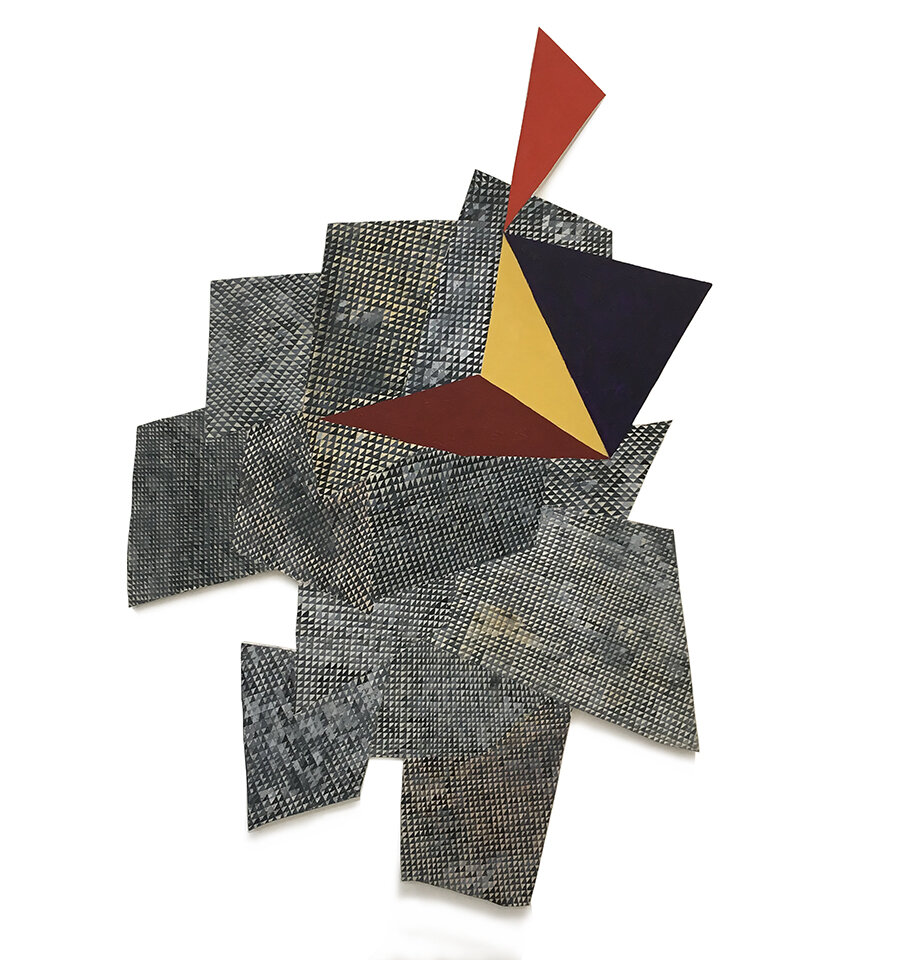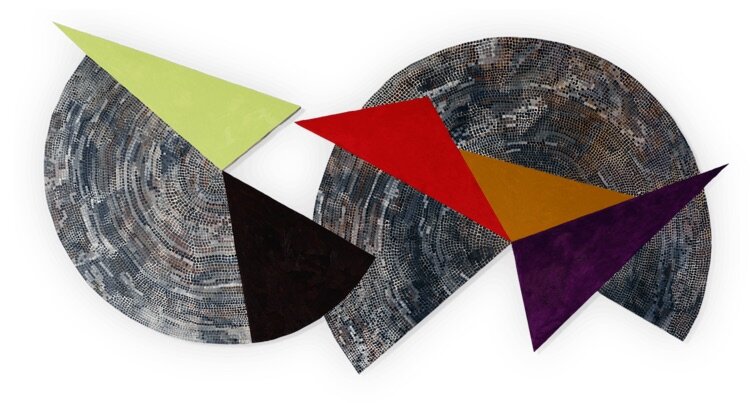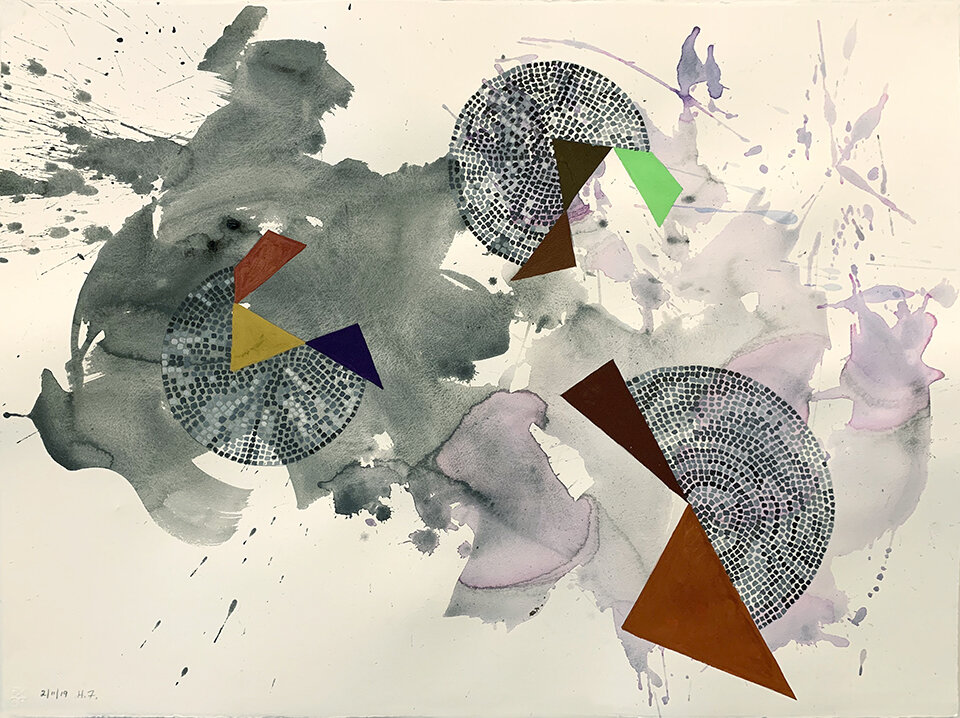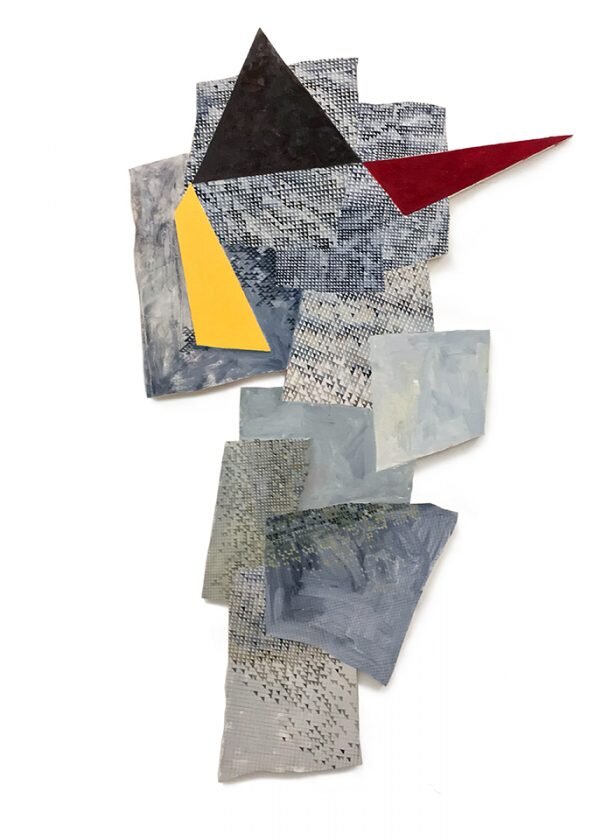Hermine Ford’s exquisite poise
Missing, 2018
oil paint, graphite, colored pencil on linen on shaped wood panel
41 ½ x 37 ½ x ¾ inches
Contributed by Jonathan Stevenson / Any painter is eclectic to a greater or lesser degree, drawing inspiration from other painters, but it’s a rarer one who successfully processes multiple discrete influences into distinctive art all her own. Hermine Ford is emphatically such a painter. Her discursively shaped paintings currently on view at the New York Studio School immediately evoke Elizabeth Murray. The brightly colored triangles and other sharply angled structures they incorporate bring to mind hard-edge abstractionists like Ellsworth Kelly, while the juxtaposed earthy, modular mosaic patterns distantly reminiscent of the work of symbolists such as Gustav Klimt. Yet each piece is triumphantly dynamic in the moment, and exhilaratingly unique.
The freewheeling shaped pieces – made with oil and pencil on linen over wood panels – exude liberation, while formal visual components consistently presented impart stability. Sometimes the shapes of the canvas and geometric configurations convey spatial or temporal directionality, cued by Ford’s titles, as in the show’s title piece Toward the Beginning, and in Moon Dial. Despite erratic outlines, each of these paintings displays visual boundaries that contain otherwise renegade forms. The former employs a footprint that approximates parentheses around arrows pointing in different directions, the latter slender triangles in the picture plane that simulate hands rotating steadily on an asymmetric clock face.
Other pieces pose less formidable but still satisfying challenges to visual order. Three untitled paintings each resemble two exquisitely poised ballet dancers – a veritable metaphor for the fine balance Ford achieves between tradition and iconoclasm, constancy and dissolution. Normally Invisible, in which she cleverly deploys bigger shapes to suggest relative occlusion, has a greater degree of overall symmetry than most of the paintings. Still other pieces throw down a gauntlet. Hats Off, Missing, and Liar Liar are agitatedly jagged and geometrically indeterminate. But they reward a hard look especially at the tile-like background segments, which confirms the studied discord suggested by their titles. Ford may deconstruct the grid, but she is never cavalier about it, invariably appreciating and meeting the need for structural cohesion in enforcing aesthetic discipline.
Anything but derivative, what seems familiar in Ford’s work instead conveys, as the press release puts it, “a sense of a common history, a shared experience of damage and revival, remnants of all of humanity’s enclosures and facades instead of a certain culture or epoch.” Despite that disclaimer, which can be read as either grand or modest, she seems well attuned the present moment. One of the exhibition’s two works on paper, an untitled rectangular piece, is the most visually distressed, with gouache imparting disintegration the northwest corner, more intact pockets of space struggling to endure spreading disorder, and the triangles pointing mainly southeast. Ancient Rome is among her influences. Ford may be observing that in history, as in a painting or a drawing, the center doesn’t always hold.
“Hermine Ford: Toward the Beginning.” New York Studio School, 8 West 8th Street, New York, NY. Through December 1, 2019.




